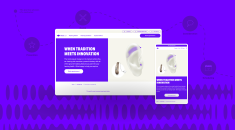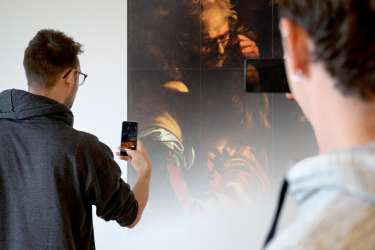
WS Audiology
DieProduktMacher
Man aspires to expand. Already the first humans set off from Africa into the unknown to enlarge their living space. Thousands of years later, the seafarers of the Middle Ages sailed towards the distant horizon and today we are adding digital spaces to the physical world. While the earlier expansions of history were always in groups, AR applications are still perceived as experiences of the individual. Does it have to be this way?
Augmented Reality applications offer us the opportunity to expand our perspective on the real world through digital devices. We can project our facial expressions onto animated animal faces, display information about places of interest right next to them or even arrange our living room before we have even bought furniture.
However, these applications usually focus on the individual user, whereas a common exploration of digital space has rarely been possible so far. So how can we use this newly gained space together?

A special ability of Augmented Reality is that through it inaccessible things can be made accessible to everyone. Imagine ancient books full of history that you would never see, or even be allowed to pick up. With AR applications everyone has access to such treasures.
On the other hand, technology makes it possible for us to perceive the act of Community action in a whole new way: If I can only explore part of the wider reality with my own smartphone, why not see much more of the new world with other people?

From the technical point of view, this is not a problem at all. One defines a parameter that changes according to the number of available devices and depending on the application, the mass of participants can become essential for the goal of the respective AR application. So you can make things accessible, but make this dependent on acting as a group. What does this mean in concrete terms?
Essentially, it is about acting together. The scenario for which we at DieProduktMacher have developed our prototype comes from the world of art. While there is only a black box on the wall, the user can discover a painting on the same spot with the help of a smartphone. The device serves as a light source, just like in the pre-electric times of the old ancestors. On their own, viewers can illuminate only a small part of the large-sized paintings at any one time, so they have to join forces with other users to make the light cone grow and finally make the painting appear completely.
As we have seen, the possibilities for the use of multi-user AR applications are numerous. The main task now will be to find out in which further cases this digital collaboration tool can have a real added value for providers and users. In any case, the conditions for exploring augmented reality are set. Who will be taking the next step?
3
2018
iOS